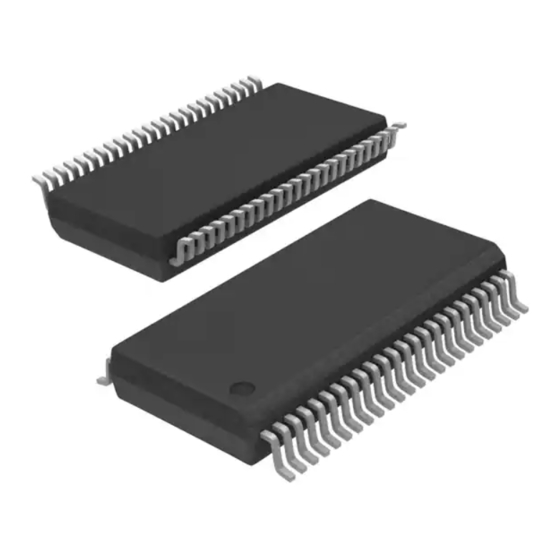Advertisement
Application Note Abstract
This application note describes the undershoot effect in the RTC circuit of the 256K and 1M nvSRAM in 0.25μ technology. The
part numbers affected are CY14B256K/STK17T88 and CY14B101K/STK17TA8.
Introduction
Under certain noise conditions, the Real Time Clock (RTC)
circuit of CY14BXXXK/STK17TX8 can be disturbed to the
point that the oscillator circuit stops.
Undershoot in Application
The RTC devices in 0.25μ specify in the data sheet that
inputs may not undershoot by more than –0.5V. This is diffi-
cult to achieve in systems where signal fall times are fast (1
to 3 ns). As a result of these fast fall times, signal undershoot
greater than –0.5V is quite common.
Signal undershoot greater than –0.5V causes the ESD
diodes on the device inputs to conduct current. This current
travels through the substrate until it reaches collection points
(guard bands with substrate contacts). However, as this cur-
rent flows within the substrate, it adds noise to the overall
noise floor on the device.
Figure 1. Signal Undershoot
3.3V
0V
-2V
November 06, 2008
Undershoot Effect in RTC Circuit
Associated Part Family: CY14BXXXK/STK17TX8
Effect on RTC Oscillator
The RTC oscillator circuit, which is embedded on the 256K
and 1M nvSRAM family is designed to be a very low power
circuit. To achieve this low power operation, the automatic
gain circuit of the oscillator is designed to operate on very
small currents (nano-Amperes). This makes the gain circuit
sensitive to on-chip noise, which in turn makes the RTC oscil-
lator circuit very sensitive to substrate currents caused by sig-
nal undershoot.
There have been reports of the oscillator stopping in some
customer systems. Investigation showed that these systems
all had a significant amount of undershoot. Correcting the
undershoot on the input pins corrected the problem. The
address pins A
of the RTC oscillator circuit. Undershoot on these address
pins has the greatest effect on the RTC circuit operation. It is
recommended that customers experiencing similar problems
investigate and correct undershoot issues.
Recommendation
Undershoot can be reduced by adding a Schottky diode (V
0.4V with I
and cathode on the signal line as close to the device pin as
possible. Layout must route the signals to connect to the
diode first then the pin if possible. The anode to ground
should go directly to the ground plane. The only signals that
require this treatment are A
must be used to confirm controlled undershoot as some fast
ESD Diode
edge rates may need more effective termination. It is critical
EDS DIODE
Conduction
CONDUCTION
that the voltage does not go below 0.6V as substrate currents
begin to flow.
Document # 001-49947 Revision **
of 0.25μ nvSRAM
GET FREE SAMPLES HERE
-A
and data pin DQ
are located in the area
0
3
0
at 100 mA) connected with the anode at ground
F
, A
, A
, A
0
1
2
AN49947
<
F
, and DQ
. A scope
3
0
1
[+] Feedback
Advertisement
Table of Contents

Subscribe to Our Youtube Channel
Summary of Contents for Cypress AN49947
- Page 1 CONDUCTION that the voltage does not go below 0.6V as substrate currents begin to flow. Document # 001-49947 Revision ** of 0.25μ nvSRAM AN49947 GET FREE SAMPLES HERE and data pin DQ are located in the area < , and DQ .
-
Page 2: Document History
Use may be limited by and subject to the applicable Cypress software license agreement. November 06, 2008 Description of Change New application note Document # 001-49947 Revision ** AN49947 Cypress Semiconductor 198 Champion Court San Jose, CA 95134-1709 Phone: 408-943-2600 Fax: 408-943-4730 http://www.cypress.com...













Need help?
Do you have a question about the AN49947 and is the answer not in the manual?
Questions and answers